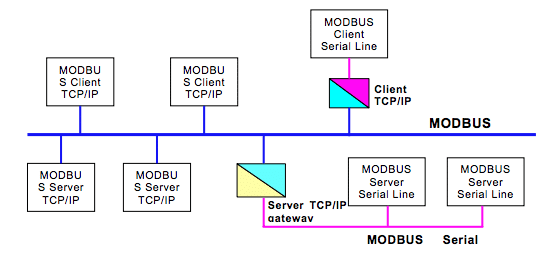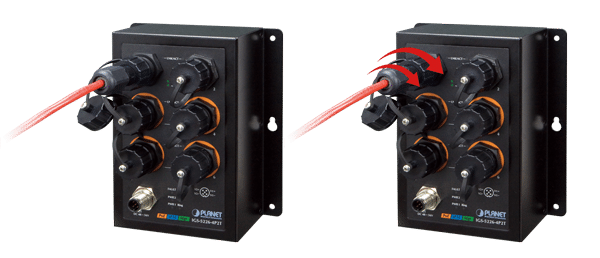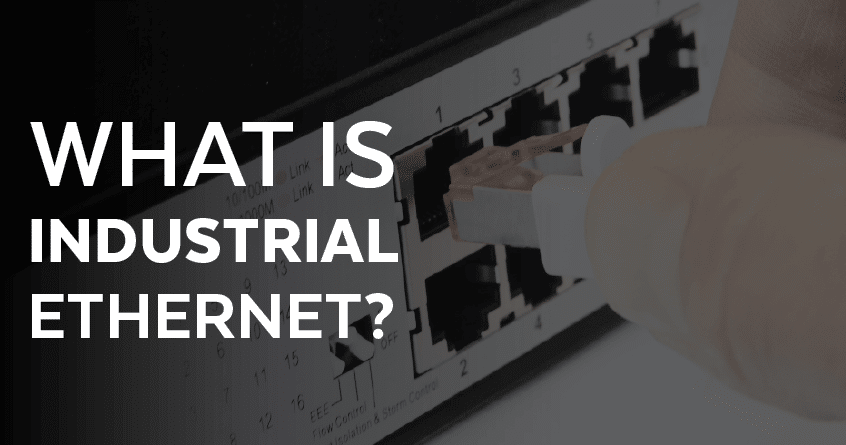Ethernet is a Local Area Network (LAN) technology that connects network devices (such as computers, printers, etc.) via Ethernet switches and routers. Industrial Ethernet is a further development of Ethernet and is a bit more complicated. This technology applies Ethernet abilities to automation and control systems used in industrial manufacturing. It has recently surpassed traditional Fieldbus architectures to become the foremost connection protocol in factories around the world.
Industrial communication happens on three levels—the routing level, the control level, and the sensor level. Each level requires different amounts and types of information transfer, collision detection, and determinism (determining in advance the route between any two nodes). Industrial Ethernet has approximately 20 protocols that are oriented to IEEE 802.3 standards. In this article, we will discuss the four most important protocols.
The Four Major Protocols in Industrial Ethernet
1) Modbus TCP/IP
Modbus TCP/IP (Transmission Control/Protocol and Internet Protocol) was the first industrial Ethernet protocol to be launched and is a variation of the Modbus family of communication protocols that were developed for the supervision and control of automated equipment. This protocol transfers discrete data between control devices using a simple master-slave communication. With this type of transmission, the “slave” node cannot transfer data until it has been commanded to do so by the “master” node. This protocol is not considered to be real-time.

Source: modbus.org
2) EtherCAT
Ethernet for Control Automation Technology (EtherCAT) is a protocol that provides power and flexibility to industrial automation, motion control, real-time control systems, and data acquisition systems. Introduced in 2003, EtherCAT offers real-time communication using the master/slave configuration mentioned above. This protocol increases speed in two ways:
- There is only one device sending data
- By using a technique called “processing on the fly,” which is when a “slave” node extracts only the information it needs from a data packet and sends the data downstream simultaneously
3) EtherNet/IP
EtherNet/IP (Ethernet Industrial Protocol) was introduced in 2000 and has become one of the most commonly used application-layer industrial Ethernet protocols and is supported by the Open Device Vendors Association (ODVA). This protocol defines devices on a network as a series of objects. It is the only industrial Ethernet protocol based entirely on Ethernet standards. Because EtherNet/IP uses standard Ethernet physical, data, link, network, and transport layers and uses standard managed Ethernet switches, it can support an unlimited amount of nodes. However, to support real-time communication and avoid latency, a limited range is required.
4) PROFINET
PROFINET (Process Field Net) is a protocol used to exchange data between controllers and devices. Examples of controllers are Programmable Logic Controllers (PLCs), Distributed Control Systems (DCSs), and Programmable Automation Systems (DDCSs). Examples of devices are Input and Output (I/O) blocks, vision systems, Radio Frequency Identification (RFID) readers, drives, process instruments, and even other controllers. PROFINET is deterministic and exchanges data in a predefined arrangement. With this protocol, devices can be changed from one vendor to another without user interaction.
Industrial Ethernet Networks Compared to Commercial Ethernet LANs
Industrial Ethernet networks, when compared to commercial Ethernet LANs, have a few key differences.
Speed
Industrial Ethernet’s need for speed is much lower than the gigabit (and higher) bandwidth required by a LAN. Industrial Ethernet speeds range from 10 Mbps to one gigabit; however, the most popular rate is 100 Mbps. This is because the amount of bandwidth needed to send control and automation data in an industrial setting is a fraction of what is required to download a video on a LAN, for instance.
Specific Operation Performance
Industrial Ethernet networks have protocols that ensure specific manufacturing data is sent and received at the exact time the information is needed to perform a particular task. It could spell disaster if an automated process difficulty had to wait for an employee to notice the problem and then push a button to correct it. This type of protocol is not as crucial in an office network setting. For example, if a user loses a website, they just need to push the refresh button to restore it. There just are not the types of automation functions in an office that, if comprised, could lead to injury or death as they can on the factory floor.
Harsh Environments
Commercial Ethernet is designed for a basic level of use, while industrial Ethernet is multi-leveled and suited for heavy-duty factory processes including noise, dirt, extreme temperatures, etc. Connectors used in industrial settings have heavier lock mechanisms and are sealed. Higher quality jacketing is required for all cabling.
 Determinism
Determinism
Commercial Ethernet is not deterministic on its own. However, determinism is crucial on the factory floor. In a production process, data packets must be sent and received at specific times—and there must be a guarantee that the data is delivered each time. The loss or delay of data between industrial equipment can lead to disaster. This real-time information transfer is one of the primary considerations for choosing a manufacturer’s Ethernet solution.
Industrial Ethernet and Fieldbuses
Although Industrial Ethernet has a high quantity of users, there is still significant use of fieldbuses. Fieldbuses are well suited for production processes where cyclic I/O data transfer is crucial. In contrast, Industrial Ethernet is used where performance and clock synchronicity matter. Here are some of the advantages of Industrial Ethernet over fieldbuses:
- The transfer of IT and real-time data takes place simultaneously
- The network can be expanded by the cascading of switches
- Transfers a large amount of data
- All users can access buses at the same time
- It has an extensive address range which allows the number of users to be almost limitless
- Different transfer media (e.g., cable, radio, light conductors) can be combined
Conclusion
The future for Industrial Ethernet is bright. Research is making steady advances and is currently focusing on improving overall performance and clock synchronicity. Industrial Ethernet is an invaluable technology that gives users:
- Better integration of plant and corporate networks
- Real-time visibility of production processes
- The ability to run multiple control regimens on a single network (e.g., process, motion, safety)
- Reduction of security risks on the industrial network
- Easily employed management capabilities.
Versa Technology offers a wide range of high performing and heavy duty Industrial PoE switches that are perfect for large-scale enterprise projects such as transportation facilities, public outdoor spaces, large structures and/or government type facilities.

